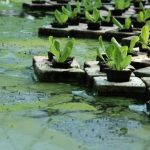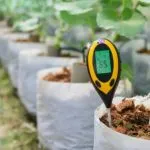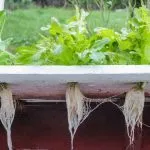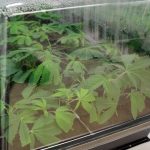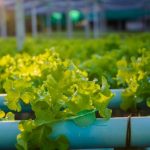Hydroponic systems offer an innovative way of growing plants without soil by using nutrient-rich water solutions. To ensure optimal growth and nutrient uptake in your hydroponic setup, it’s essential to know how to oxygenate water for plants. Oxygen is a crucial element for healthy root systems, and providing it to your plants will enhance their overall health and productivity.
Oxygenating water in hydroponics is a straightforward process, and there are several effective methods to choose from. Some of the most popular techniques include using air stones, air diffusers, and aeration. By understanding how these methods work, you can create an oxygen-rich environment that maximizes your plants’ growth potential.
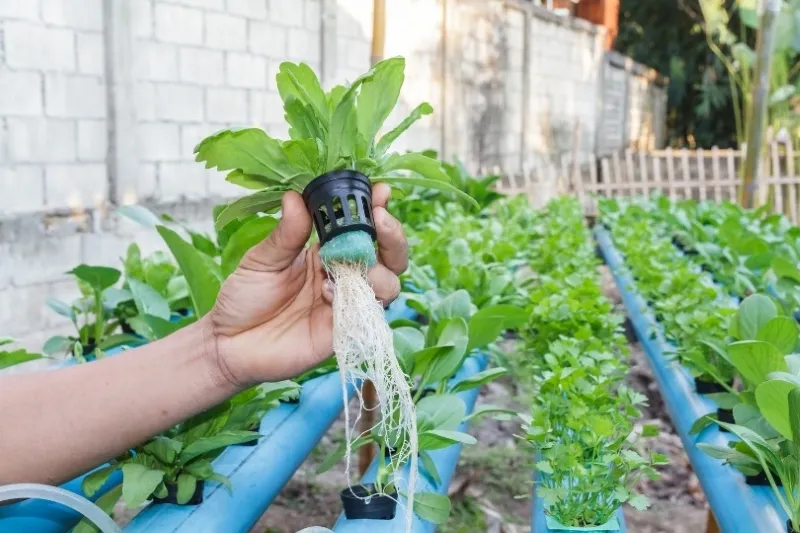
In this article, we will discuss various methods on how to oxygenate water for plants in hydroponics. By following these tips, you can ensure your plants thrive and enjoy a bountiful harvest at the end of the growing season. So, let’s explore the world of oxygenation in hydroponic systems and transform your garden into a flourishing oasis.
- Why Oxygen is Crucial for Hydroponic Systems
- How Much Aeration for Hydroponics?
- Methods for Oxygenating Water in Hydroponics
- Factors Influencing Oxygen Levels in Hydroponic Systems
- Preventing and Overcoming Oxygenation Problems
- Maximizing Plant Growth and Yield
- Additional Tips and Considerations
- Frequently Asked Questions
Why Oxygen is Crucial for Hydroponic Systems
Is oxygenated water good for plants? In hydroponic systems, the answer is yes. Oxygen plays a vital role in the overall health and growth of your plants. In this section, we’ll discuss how oxygen is crucial for plants in hydroponic systems and the various factors contributing to its importance.
When it comes to hydroponics, the plants’ roots are suspended in water, which serves as the primary source of oxygen and nutrients. Thus, oxygenation greatly impacts your plants’ ability to absorb essential nutrients. Oxygen helps your plants maintain cellular respiration and energy production, which are vital for their growth and development.
Higher oxygen levels promote the growth of beneficial microbes in your hydroponic system. These helpful microorganisms aid in breaking down organic matter and enhancing nutrient availability to your plants. On the other hand, poor oxygenation may lead to the buildup of harmful bacteria and pathogens that can cause diseases, ultimately affecting plant growth.
Temperature plays a vital role in oxygen levels too. As the temperature of your water increases, its capacity to hold dissolved oxygen decreases. So, it’s crucial to maintain an optimal water temperature in your hydroponic system to ensure sufficient oxygenation.
A well-oxygenated hydroponic system helps prevent root rot, a common issue that occurs when plants’ roots are submerged in low-oxygen conditions. Root rot not only affects nutrient uptake, but also compromises the overall structural integrity of your plants. By ensuring proper oxygenation, you can minimize the risk of root rot and promote a healthy root system.
Lastly, the oxygen levels in your hydroponic system directly impact plant growth and yield. A properly oxygenated environment supports robust growth and improves the overall quality of your plants. By maintaining an optimal oxygen level, you can look forward to a bountiful and healthy harvest from your hydroponic garden.
Related: Another important environmental factor for growing plants is light. Do hydroponic plants need sunlight or will artificial light do?
How Much Aeration for Hydroponics?
Dissolved oxygen levels in the root zone should be at least 6 ppm higher for optimal growth. To prevent algae formation, aerate nutrient reservoirs at a rate of about .5 liters per minute (L/pm) of airflow for every gallon of fertilizer solution. An airflow production of 1 liter per minute (l/pm) per gallon of nutritional solution in the reservoir should almost completely oxygenate the solution.
The use of a dissolved oxygen generator in a deep water culture (DWC) setup is recommended. You may also use 5-1L/pm per gallon, as aeration of the solution improves when the liters per minute per gallon value gets near to 1.
Keep in mind that the aerator’s size should be determined by the amount of water being used, not the container’s overall volume. In a 5-gallon bucket, for instance, you could only end up utilizing 3-to-4 gallons.
Methods for Oxygenating Water in Hydroponics
Using Air Stones and Air Pumps
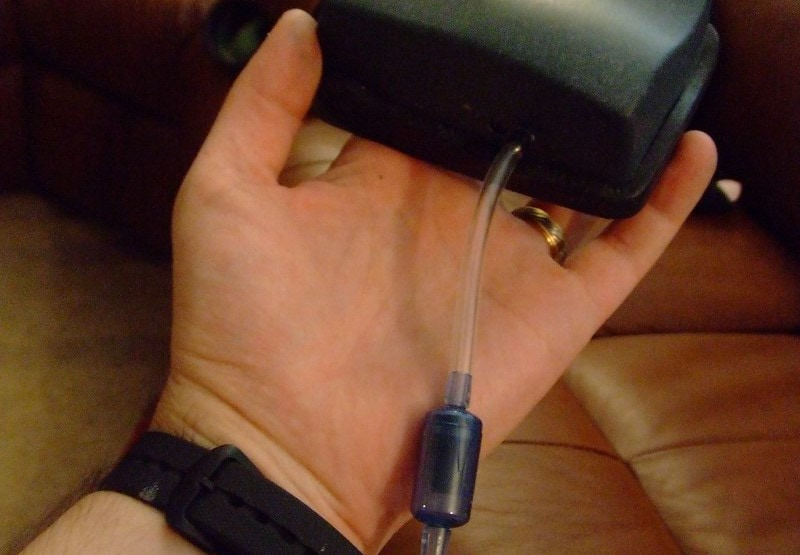
One way to oxygenate water in hydroponics is by using air stones and air pumps. Air stones are porous materials that break up air into large bubbles when connected to an air pump. The air pump pushes the air through the air stone, creating bubbles that disperse oxygen in the water. Want to know how to add oxygen to water for plants in the most popular way? This is it, as it is inexpensive and easy to implement in most hydroponic systems.
Selecting an Appropriate Air Diffuser
An alternative to air stones is an air diffuser, which is designed to mix air with water more effectively. Choosing the right air diffuser depends on the specifics of your hydroponic system, such as the size of your grow bed or reservoir. Large, high-capacity air diffusers are available for more extensive systems, while smaller diffusers are suitable for compact setups. These devices help maintain optimal dissolved oxygen levels, promoting healthy root growth and nutrient uptake.
Utilizing the Aeroponics, Ebb and Flow, or Nutrient Film Techniques
The ebb and flow, nutrient film, and aeroponic techniques are other useful methods of how to oxygenate water for hydroponics. The first approach involves periodically filling the grow bed with nutrient solution before draining it back into the reservoir. During the draining process, fresh air is drawn into the root zone, replenishing oxygen levels. The process is simple and low-maintenance, but be sure to determine the right frequency for flooding and draining based on your plants’ needs.
The NFT approach involves just a thin film of water flowing through the bottom of the roots so that the upper parts are exposed to oxygen naturally. A carefully calibrated NFT watering schedule will help you get the right balance of nutrients and oxygen without the need for additional aeration equipment.
The aeroponic approach involves letting plant roots hang in the air while nutrient-rich water is sprayed at them. This method is obviously great at allowing proper aeration of plant roots.
Incorporating Aquaponics in Hydroponic Systems
Aquaponic systems offer a unique solution to oxygenate water, combining hydroponics with fish farming. The fish’s school help maintain the dissolved oxygen generator and support the recycling of nutrients. As fish produce waste, it is broken down, releasing ammonia and other nutrients that plants can absorb. Additionally, the movement of fish in the water can create natural aeration, further increasing dissolved oxygen levels.
Implementing Hydrogen Peroxide
A fast-acting method of increasing dissolved oxygen is through the use of hydrogen peroxide. Add a diluted hydrogen peroxide solution to the reservoir, which breaks down into water and oxygen, injecting extra oxygen directly into the nutrient solution. Keep in mind that this approach is relatively short-term and should not be your primary oxygenation method. It is, however, a good way to get rid of algae in your hydroponic system. Be cautious with the concentration and frequency of use, as excessive amounts may harm delicate root systems.
In general, it takes about 15-30 minutes to oxygenate water for plants using air stones or air diffusers. However, this duration may vary depending on the specifics of your hydroponic system and the dissolved oxygen generator used. Remember, maintaining adequate oxygen levels in hydroponic systems is crucial for plant health and growth. So experiment with different approaches to find the best method for your specific setup.
Factors Influencing Oxygen Levels in Hydroponic Systems
Considering Water Temperature
One significant factor that affects oxygen levels in your hydroponic system is water temperature. Colder water can hold more oxygen compared to warmer water, so regulating the temperature plays an essential role in how to increase dissolved oxygen in water. Your hydroponic plants’ roots and nutrient uptake could suffer if the water’s temperature gets too high.
To maintain optimal oxygen concentration and water temperature in your hydroponic system, you can use a water chiller. This device would help lower the temperature, allowing the water to hold more oxygen and providing adequate oxygen levels for your plants’ root growth.
Managing pH Levels
Another essential factor in oxygenating water for your hydroponic plants is managing pH levels. Learning how to maintain pH balance in hydroponics is crucial for nutrient uptake and proper root growth. If the pH levels are too high or too low, your plants could suffocate and struggle with nutrient deficiencies.
Want to know how to increase dissolved oxygen in water naturally? Well, there is a correlation between dissolved oxygen and pH levels. Lower pH levels result in higher concentrations of oxygen in water. So keep an eye on the pH meter and make sure the pH reading stays within the recommended range for the crop that you’re growing. Many fruits and vegetables, like beans, squash, and tomatoes prefer a range between 5.5 and 6, whereas blueberries prefer a lower level – between 4 and 5.
To ensure optimal pH levels for your hydroponic plants, regularly test the water pH and adjust it as needed. Maintaining the recommended pH range for your specific plants will help them thrive and optimize the nutrient solution in your system.
Optimizing the Nutrient Solution
The right nutrient solution plays a critical role in the overall health and growth of your hydroponic plants. Oxygen is required for your plants’ photosynthesis process and the breakdown of nutrient solutions to support root growth and nutrient uptake. For optimal oxygen levels and super oxygenated water in your hydroponic system, it’s vital to provide the proper concentration of nutrients that your plants need.
When selecting the nutrient solution for your hydroponic system, consider your plants’ specific requirements and the stage of growth they are in. Providing the right balance of nutrients will help your plants effectively use the dissolved oxygen in the water, promoting their overall health and development. After all, hydroponic plants grow faster because of this optimal balance.
Preventing and Overcoming Oxygenation Problems
Identifying Root Rot Causes and Solutions
Root rot is a common issue in hydroponic gardens caused by a lack of oxygen in the water, providing a perfect breeding ground for anaerobic bacteria. If you notice your plants’ roots turning brown, mushy, and smelly, it’s likely they’re suffering from root rot. To prevent root rot, ensure that your water has appropriate oxygen levels. While it’s rare, it’s important to note that dissolved oxygen can be too high in your system, as it may harm the delicate balance of nutrients and pH.
There are several methods to oxygenate the water, such as using air stones, bubblers, or aerating pumps. The Kratky method and aquaponic systems also help with oxygenating water naturally. Maintaining an oxygen gap is essential, as it gives enough time for the water to absorb oxygen from the atmosphere before it reaches the plants.
Related: Learn more about hydroponic root rot treatment and prevention.
Managing Bacteria and Disease
Hydroponic systems need to be closely monitored to prevent the growth of harmful bacteria and diseases. One critical factor in managing bacteria and diseases is maintaining suitable dissolved oxygen levels. This helps inhibit the growth of anaerobic bacteria, which can cause root rot and other problems for your plants.
To keep your plants healthy and prevent bacterial growth, adhere to the following tips:
- Monitor the dissolved oxygen levels in your water, ensuring they’re within the recommended 6-10 PPM range.
- Keep your hydroponic system clean and free from debris that may introduce bacteria.
- Change the nutrient water solution regularly and sterilize equipment between uses.
- Know how to filter water for hydroponics so that physical impurities and organic compounds are prevented from entering the system.
- Monitor any changes in plant health and address any issues promptly.
By following these guidelines, your hydroponic garden will thrive, and you can effectively prevent oxygenation problems, root rot, and harmful bacterial growth.
Maximizing Plant Growth and Yield
Using Super-Oxygenated Water for Improved Results
In hydroponic gardening, oxygenating water can greatly enhance your plant growth and overall yield. By learning how to increase dissolved oxygen in the water, you’ll help your plants absorb more nutrients and promote healthy root development. Super oxygenated water in plants comes with numerous benefits, including enhancing nutrient absorption, root growth, and overall plant health during vegetative and flowering stages.
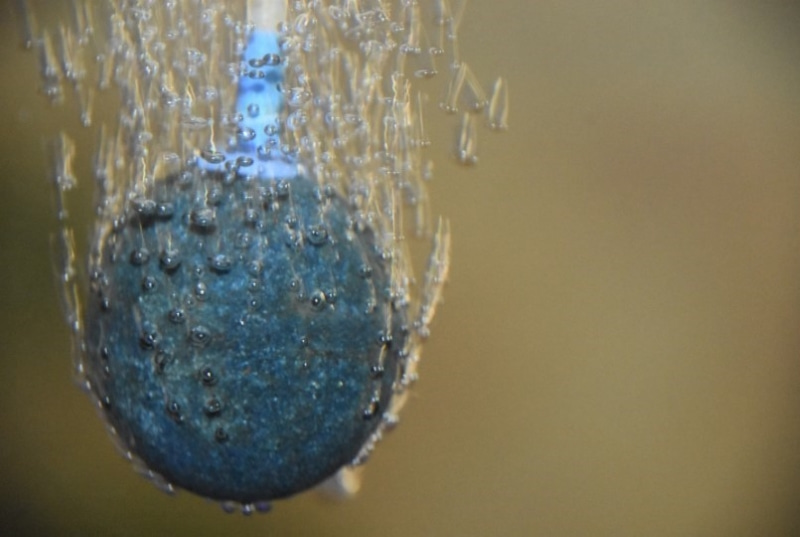
To create highly oxygenated water, you can use an air pump and air stone to push oxygen into the water, or an oxygen generator that saturates the water with dissolved oxygen. This leads to improved growing conditions for your hydroponic plants, promoting more efficient aerobic respiration and robust yields.
Ensuring Adequate Aeration and Nutrient Uptake
A critical factor in hydroponic gardening is managing water quality, as your plants are growing directly in a nutrient-rich water solution without soil. Ensuring proper aeration and nutrient uptake in your system is essential for healthy root growth, as it helps to prevent root rot and other issues that can hinder plant development.
Here are a few tips to ensure adequate aeration and nutrient uptake in your hydroponic system:
- Make sure you have a strong water pump that can maintain a steady flow, circulating your nutrient-rich water solution throughout the system and delivering it to your plant roots.
- Regularly check and maintain the pH levels in your hydroponic system, as this will impact nutrient availability for your plants. The ideal pH range for most hydroponic plants is between 5.5 and 6.5.
- Use an appropriate growing medium, such as coconut coir, that provides excellent support for your plant roots while promoting efficient water and oxygen absorption.
By focusing on these aspects of hydroponic plants’ growth, you can effectively maximize their yield and overall health. With super-oxygenated water and proper management of aeration and nutrient uptake, your plants will thrive and produce better quality crops in a soil-less environment.
Additional Tips and Considerations
Analyzing Water Quality for Hydroponics
When it comes to oxygenating water for your hydroponic plants, don’t forget to analyze the quality of your water. Regular tap water has different minerals and elements that might affect the growth of your plants. Instead, you can use purified water or rainwater, which can provide better results. Here are some ways to work with different water sources:
- Regular tap water: If using tap water, let it sit for a day before using it in your hydroponic system. This will help in removing the chlorine and other volatile compounds.
- Rainwater: Collecting rainwater can be an environmentally friendly and cost-effective way to oxygenate your water. Rainwater is free of chemicals and pollutants, but ensure you filter out any debris before use.
Utilizing Alternative Water Sources
As part of your efforts to provide oxygen to your hydroponic plants, consider alternative water sources such as aquaponics and compost tea. These sources offer unique benefits and contain valuable nutrients.
- Aquaponics: Aquaponics combines hydroponics with fish development, creating a self-sustaining system. Fish produce nutrients, like ammonia and nitrate, from their waste which, in turn, gets circulated to the plants. The plants absorb these nutrients, and the water is returned to the fish tank, now cleaner and more oxygenated.
- Compost tea: Compost tea is a nutrient-rich liquid made from compost and organic matter, which contains oxygen and beneficial microorganisms for your hydroponic plants. To produce compost tea, use an automatic siphon system that regularly adds the compost tea to your hydroponic system. This method promotes root growth, plant health, and oxygenation of water.
By paying attention to water quality and considering alternative water sources, you can provide the best conditions for your hydroponic plants to grow and thrive.

